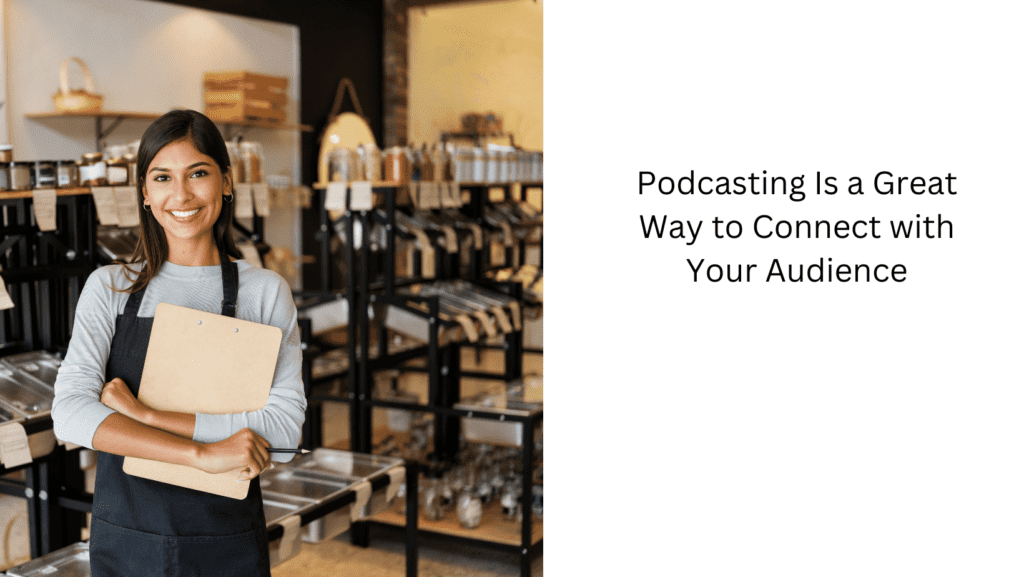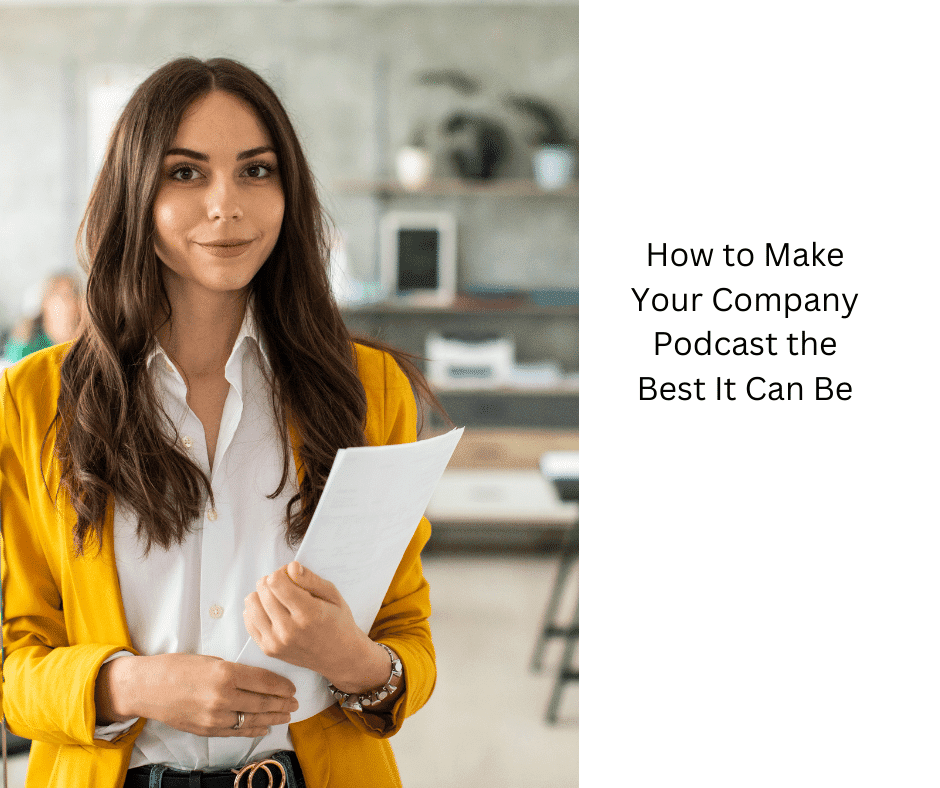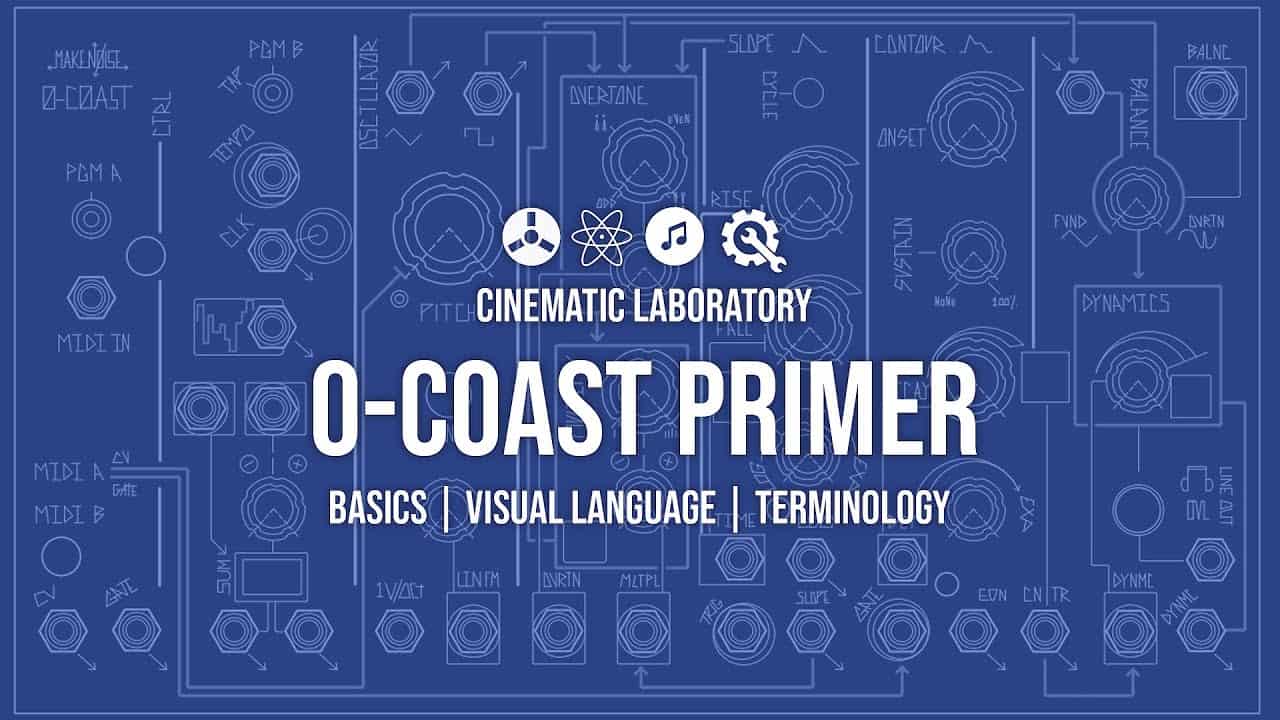One of the most popular trends of the past few years has been podcasting. A podcast is like a radio show but with a smaller audience. The audience you get is usually interested in a specific topic. They might want to listen to a podcast about a particular industry or a podcast about cooking. You can create your podcasts but sometimes it is better to work with a podcast creation company.
I suggest trying to make a podcast in the beginning so you understand what you are doing and have a good understanding of the content you are creating.
You might not know all the technical terms related to podcasting, but you do need to learn them. You will need to understand the different podcasting hosting websites, the recording tools, and the different types of devices that you will be using.
Plan Your Episodes
When making a podcast, you must know what you want to cover in each episode. This means thinking about the type of content you want to cover and the order in which you would present it. Then, you can develop an outline or script that will help you organize the elements of your episode. This will help you highlight the most important messaging within the podcast. It will also help you refine the order in which you deliver each element.
When making a podcast, you should also keep the needs of your listeners in mind. Although it is important to stamp your brand on the content, listeners don’t want to hear a blatant sales pitch. Keeping the tone light and focusing on content will help you attract your audience’s attention.
Choose topics relevant to your target audience to make your podcast more entertaining. Avoid common topics and focus on unique topics. Don’t forget to include a few guest spots, but make sure not to try to sell your products. You can mention a product or service at the beginning or at the end of the episode. You can even hire a freelance sound editor, who can edit your podcast for you.
Once you know what topics will attract your audience, start thinking about who will deliver the content and connect with the listeners. This will help you stand out among your competition. You should be able to identify the person best suited for the job and use that to your advantage.
Be Brief Where Needed
You should also be aware of the bandwidth of your audience. A busy entrepreneur may only have fifteen minutes to listen to an hour-long podcast. Moreover, they may listen to the podcast on the train, in the car, or in their homes. Hence, your podcast should be short enough to allow your listeners to focus on what they need to know.
Excellent Audio Quality Is a Must Have
A podcast must also have excellent audio quality. Choose a good microphone and make sure you have an echo-free environment. Then, record audio files. You can use internet-based plugins to record your podcast, install software on your computer, and record directly to the hard drive. If you have several guests, buying enough microphones to accommodate everyone is important.
Podcasting Is a Great Way to Connect with Your Audience
If you want to add some extra content or show your audience how to do something, you can add a video camera to your podcasting setup. This will allow you to show your audience what you are talking about, and they can see it for themselves. You will need to make sure that your video is high quality and that you are using a tripod to keep the camera steady.
Company podcasts are a dime a dozen these days. Every business, no matter the size or industry, has one. But just because everyone else is doing it doesn’t mean you should jump on the bandwagon without thinking things through first. Here are a few things to consider before starting a company podcast.
Who Is Your Target Audience?
This is perhaps the most important question before starting a company podcast. Who are you trying to reach with your podcast? Is your target audience other businesses in your industry or consumers? Once you know who you’re talking to, you can tailor the content of your podcast accordingly.
What Value Will Your Podcast Provide?
As with any piece of content you create, your company podcast should provide value to your target audience. Ask yourself, what problem does your podcast solve or what need does it fill? Your podcast won’t be very successful if you can’t answer that question.
Who Will Be Hosting the Podcast?
Once you have created your podcast, it is time to post it online. You can do this by using a podcast hosting service. It allows you to upload your audio files and add show notes. After that, you can start promoting the podcast. Ensure that you choose a podcast hosting service to host your podcast episodes.
The host of your company podcast will be your brand’s face (or voice, rather), so it’s important to choose someone articulate and engaging. Ideally, the host should also be someone with knowledge in the industry or area of expertise your podcast will cover.
How Often Will You Release New Episodes?
Consistency is key when it comes to company podcasts. You don’t want to release new episodes erratically; that will only confuse and frustrate your listeners. Instead, aim for a set release schedule (e.g., once a week, once a month) and stick to it as much as possible.
Make Sure to Test Your Podcasting Software
You might have to make some changes to how it works to make it work better for you. For example, I was using a recording software with which I had problems. I changed to new recording software and had to make several changes to get it to record. The same thing can happen when you are making a new podcast.
Make Sure Your Podcast Is on iTunes
You do not want to limit your audience to your website or your local audience. By going to iTunes, people can subscribe to your podcast and get your podcast on multiple devices. You will need to create a description for your podcast to make it easier to find on iTunes. This is also useful if you want to have your podcast on platforms such as Stitcher or Google Play.
You Can Create a Podcast with a Video Camera
If you want to add some extra content or show your audience how to do something, you can add a video camera to your podcasting setup. This will allow you to show your audience what you are talking about, and they can see it for themselves. You will need to ensure that your video is high quality and that you are using a tripod to keep the camera steady.
You Can Add Guest Interviews to Your Podcast
If you want to add some extra content or show your audience how to do something, you can add a video camera to your podcasting setup. This will allow you to show your audience what you are talking about, and they can see it for themselves. You will need to make sure that your video is high quality and that you are using a tripod to keep the camera steady.
You Can Use a Phone App to Record Your Podcast
You can use a phone app to record your podcast if you are on the go. This is a great way to record your podcast if you are in a car or taking public transportation. You must ensure that you have a good microphone and use a tripod to keep the camera steady.
You Can Use Skype to Record Your Podcast
If you want to add some extra content or show your audience how to do something, you can add a video camera to your podcasting setup. This will allow you to show your audience what you are talking about, and they can see it for themselves. You will need to ensure that your video is high quality and that you use a tripod to keep the camera steady.
You Can Add Music to Your Podcast
If you want to add some extra content or show your audience how to do something, you can add a video camera to your podcasting setup. This will allow you to show your audience what you are talking about, and they can see it for themselves. You will need to ensure that your video is high quality and that you use a tripod to keep the camera steady.
You Can Add Effects to Your Podcast
If you want to add extra content or show your audience how to do something, you can add a video camera to your podcasting setup. This will allow you to show your audience what you are talking about, and they can see it for themselves. You will need to ensure that your video is high quality and that you use a tripod to keep the camera steady.

Conclusion
A podcast is an excellent way to build a relationship with customers. It is an effective way to share your company’s personality and its products. It also helps you establish yourself as a thought leader in your industry. You can create brand loyalty by sharing your passion for what you do and your expertise.
A company podcast can be a great way to reach new audiences and promote your brand. But before you start recording, there are a few things you need to consider first, such as who your target audience is and what value your podcast will provide them. Once you’ve considered those factors, you can start planning things like who will host the show and how often new episodes will be released. By taking the time to plan out your company podcast ahead of time, you’ll increase your chances of success.










